During my recent visit to Chicago (my first), I spent quite a lot of time in the Art Institute, a wonderful museum stuffed full of masterpieces of Western Art. Pride of place was given to Seurat’s masterpiece, A Sunday on La Grande Jatte, 1884. Who could fail to recall the memorable scene in John Hughes’ classic 1986 coming-of-age film Ferris Bueller’s Day Off when Ferris’s intense friend Cameron stands motionless in front of the painting staring ahead as the camera stills advance closer and closer into the ‘pointillist’ dots on the canvas.
After a 17 day tour of cities in the centre and east of the USA in late April - early May this year, giving lectures on the history of St James's Palace, I found time to visit major museums which I had not been to before. My trip took me to the major cities of Cleveland, Chicago, Philadelphia, New York, Winston-Salem and Houston, which meant visiting the Cleveland Museum of Art, The Art Institute of Chicago, the Philadelphia Museum of Art and the Museum of Fine Arts Houston. I was also speaking in Winston-Salem where I visited the Museum of Early Southern Decorative Arts or MESDA, but in this post there’s more than enough to write about on the larger museums alone.
Like most students of art history who were taught at school and university in the UK and US during the second half of the twentieth century, I was soaked in a love of art history beginning with E H Gombrich's classic The Story of Art. The canon of great art is made clear : the Italian Renaissance in Florence, Baroque Rome, and Parisian Impressionism and Post-Impressionism and other moments of ‘great art’ in time and place are given emphasis. And walking around these magnificent American institutions, it is clear to see how art history - and by extension collecting history - has influenced the formation of the American museum.
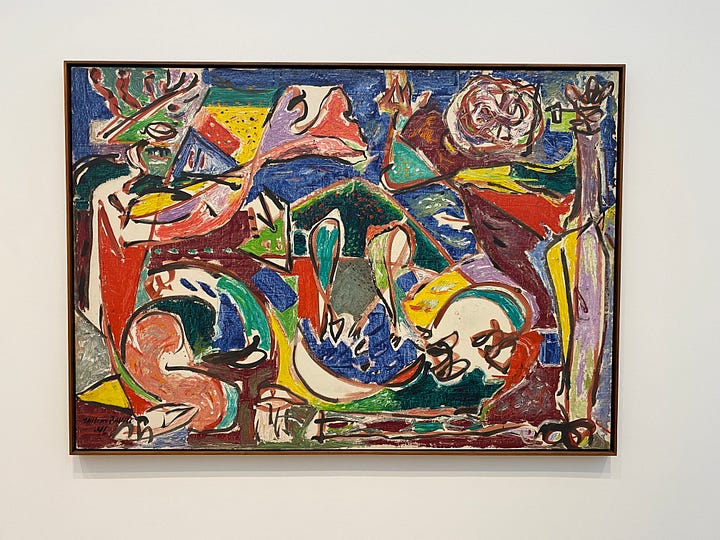
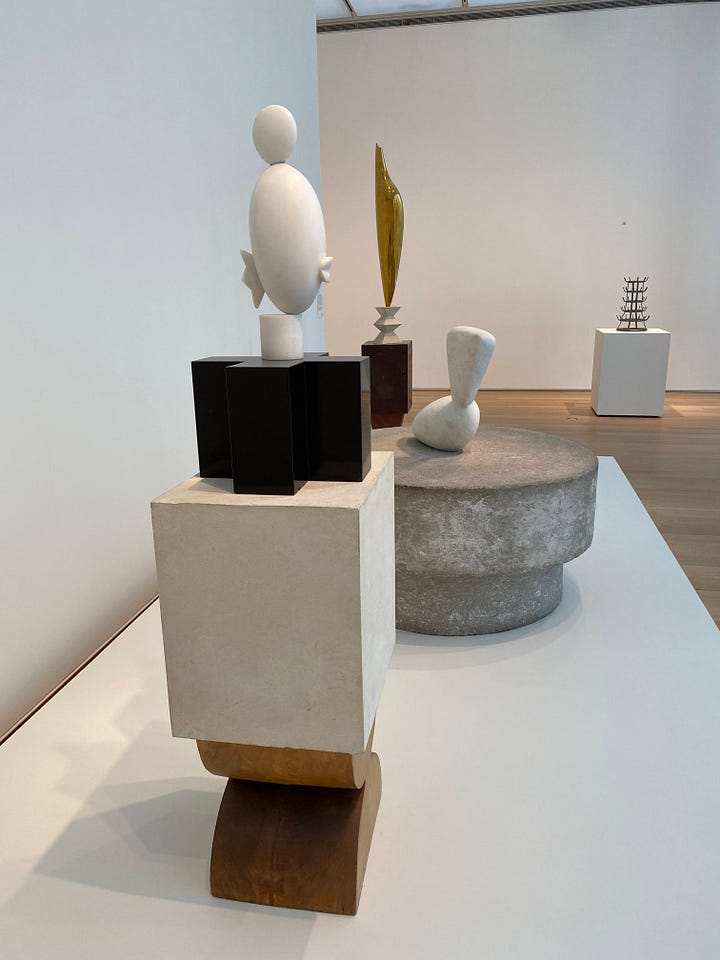

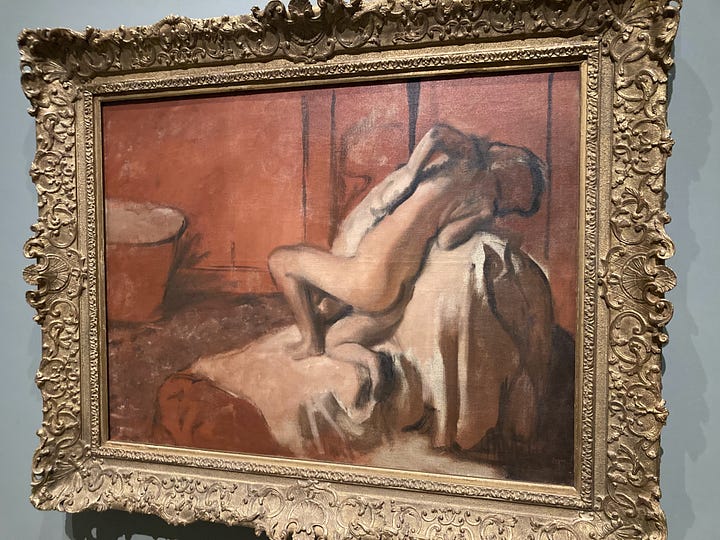
My personal experience of gallery visiting as a teenager and student was almost entirely European-based. The core of the great continental European collections in Paris, Madrid, Vienna, Rome, Berlin, Dresden, Prague, Stockholm, Copenhagen - even lesser cities such as Kassel - are to a large extent based on former royal, princely or papal collections. With the exception of the Vatican museums, these collections have become national galleries, indeed their royal history is subsumed into a national narrative. London remains something of an outlier in this respect as its royal collection remains intact with its outstanding collection of pictures, furniture, armour, silver and other works which are visited in Windsor, Edinburgh and London by about 3m visitors each year. A parallel - national - collection was formed in the 1820s, which in 1824 was founded as the National Gallery. To visit a great European gallery such as the Kunsthistorisches Museum in Vienna or The Prado in Madrid is, at least partly, to experience the pictures and the works of art which made up a Princely European collection before about 1800.
By contrast American museums emerged in the late 19th and 20th centuries as an entirely different phenomenon. As American wealth increased through commerce, and huge fortunes were made by great American businessmen such as Andrew Mellon, Samuel Kress, J. Pierpont Morgan, Andrew Carnegie, John D Rockefeller, Peter Widener, Marshall Field, Henry Huntington and many others, these men, and their wives and children built up great collections of paintings and works of art, and endowed museums with their works and established funds to maintain them. Their motivations were both self-memorialisation and also civic. The de-centralised political geography of the United States, fostered a strong sense of regional attachment, not unlike the competing city states of Italy throughout the 16th and 17th centuries. In the USA in the twentieth century, the fragmentation was partly due to the vast physical size of the nation, meaning it was possible to build up many regional centres of industry, wealth and art (in that order). Many of the great American museums were established in the first part of the twentieth century, when there seems to have been a sort of medieval Italian city state-style 'campanilismo' - the size and scale of each city's municipal gallery - and endowment - a reflection of its status in the US constellation of important cities. Chicago's Art Institute was one of the earliest, established in 1879. Philadelphia's collection was begun in 1876 following the 'Centennial Exhibition' the same year, though the (spectacular) present building was only completed in the 1920s. Mellon's name comes first in the list above, not least because it was his endowment and collection which established the National Gallery of Art in Washington DC in 1937. Houston's collection was established in 1917 and the Museum of Fine Arts building completed in 1924. The Cleveland Museum of Art was founded in 1913 with the bold aim that it would be 'For the Benefit of all the People Forever'. It is one of the few museums in the USA with free admission to its permanent collection.
So what can one expect to see when visiting these temples of art and culture? When in Cleveland, I was introduced to a former chair of the trustees of the Cleveland Museum of Art who asked me what I made of Cleveland’s museum which he described as the ‘executive summary of the Metropolitan Museum of Art’? He was half-serious, and the flippant description is not entirely foundation: Cleveland’s collection is exquisite, broad-ranging and astonishingly high in quality. On my visit there I sought out remarkable Renaissance bronzes, antiquities, Faberge, armour, Impressionist paintings, south Asian stone carvings, objects from medieval religious treasuries - all of outstanding quality. Besides a tour by Cory Korkow, curator of European Paintings, of the memorable and very beautifully-displayed Tudors exhibition, brilliantly curated by Metropolitan Museum of Art, New York curators Lizzie Cleland and Adam Eaker, I was also kindly shown some of the European paintings and decorative arts galleries. Many of the great paintings now at Cleveland were brought there in the 1960s and 70s by Leonard C. Hanna, Jr, whose acquisition fund has permitted the Museum to continue to buy at the top level.

Chicago was equally fascinating. Here I was given a quick tour by Kit Maxwell, curator of Applied Arts, and taken to the furniture store room to inspect some of the pieces off-display. I also had the privilege of being shown the medieval and arms and armor galleries by John Tavares, the curator responsible for its recent redisplay. A notable highlight being the ‘in action’ display of garnitures (below).
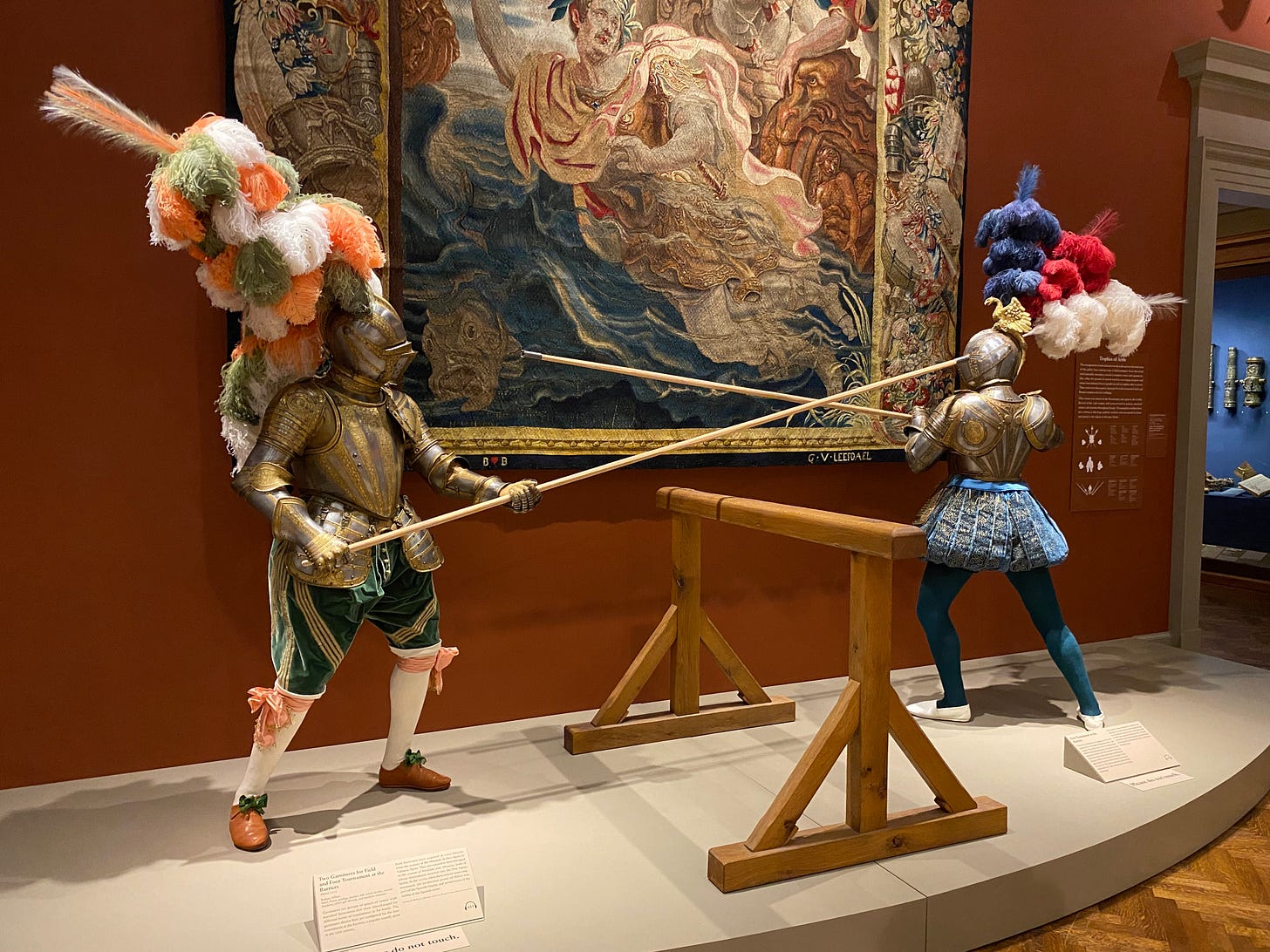
The furniture galleries are limited compared with the acres of space given over to paintings, but the collection taken as a whole is superb: not least the remarkable collection of Impressionist pictures, especially paintings by Claude Monet (below).
The main furniture and decorative arts galleries, with great works from the late seventeenth to the nineteenth centuries will close for refurbishment from next year. The collection is small but exquisite, and having had the opportunity to inspect items in store there is plenty of excitment to come when the galleries reopen.
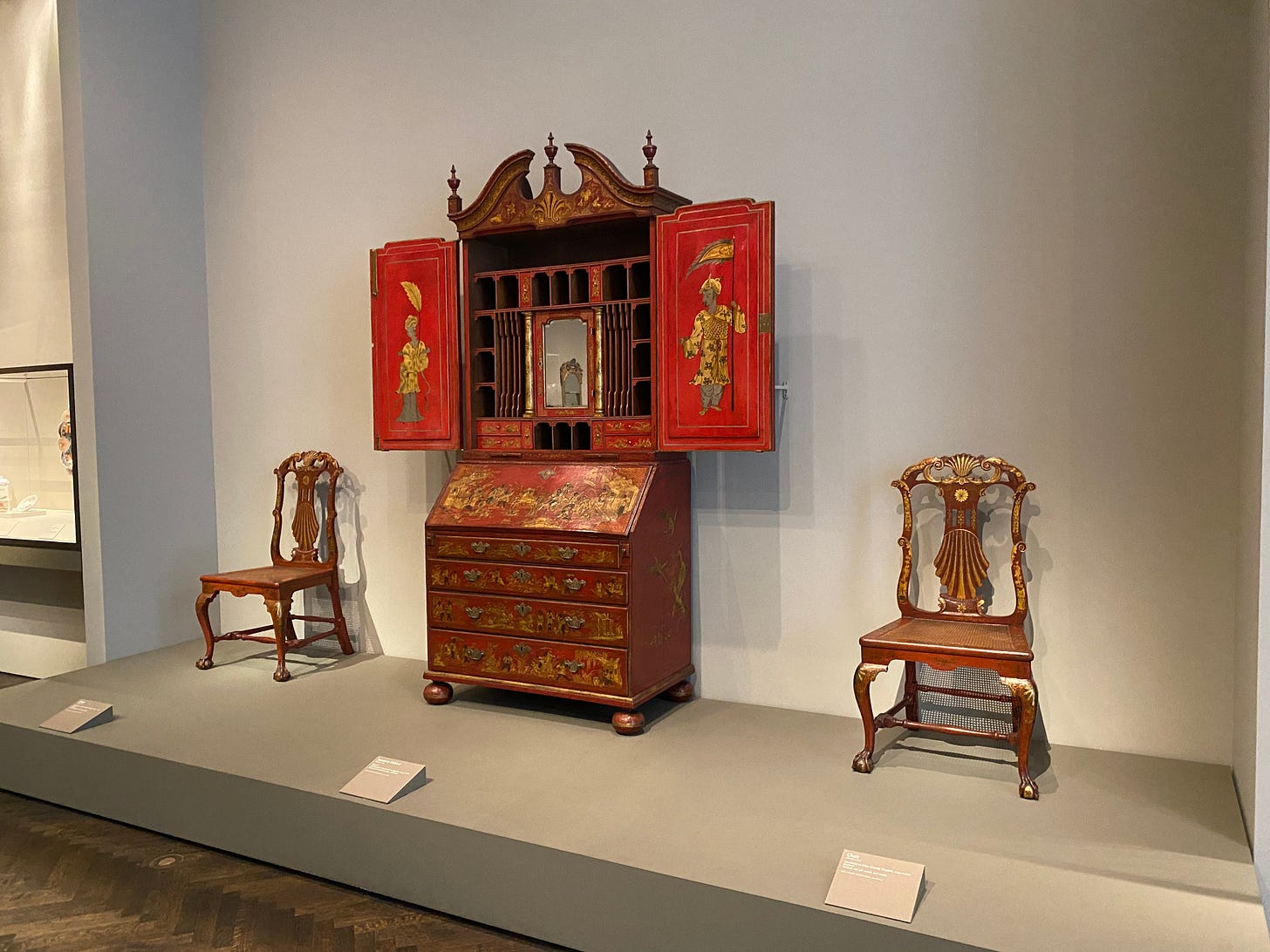
Next I visited the Philadelphia Museum of Art and was directed to the new American galleries. I was delighted to be able to immerse myself in an area about which I am only faintly familiar. The objects on show are spectacular and sensitively tell the story of emigration, settlement, displacement of indigenous communities, enslavement, commerce, fashion and political leadership - it seemed to me that the curators were asking a lot of the objects there to narrate so many complex threads of history, society and culture - but I think they succeeded. I came away deeply impressed not only by the beauty and quality of the objects on display, but also the way the objects had been situated within their social and cultural setting. The curaotrs chose to place objects on a raised dais, museum-like, rather than opting for full ‘room-sets’ (there were one or two room-sets, to give an idea of 19th century interiors). Getting the balance right between pastiche interior recreation (wax fruit?) and dull white-box modernist museum display with bright lights (dentist’s chair?) is not easy. I thought Philadelphia’s new American galleries got it just about right, erring on the museum-side of the display spectrum - which on balance seemed right for a museum.
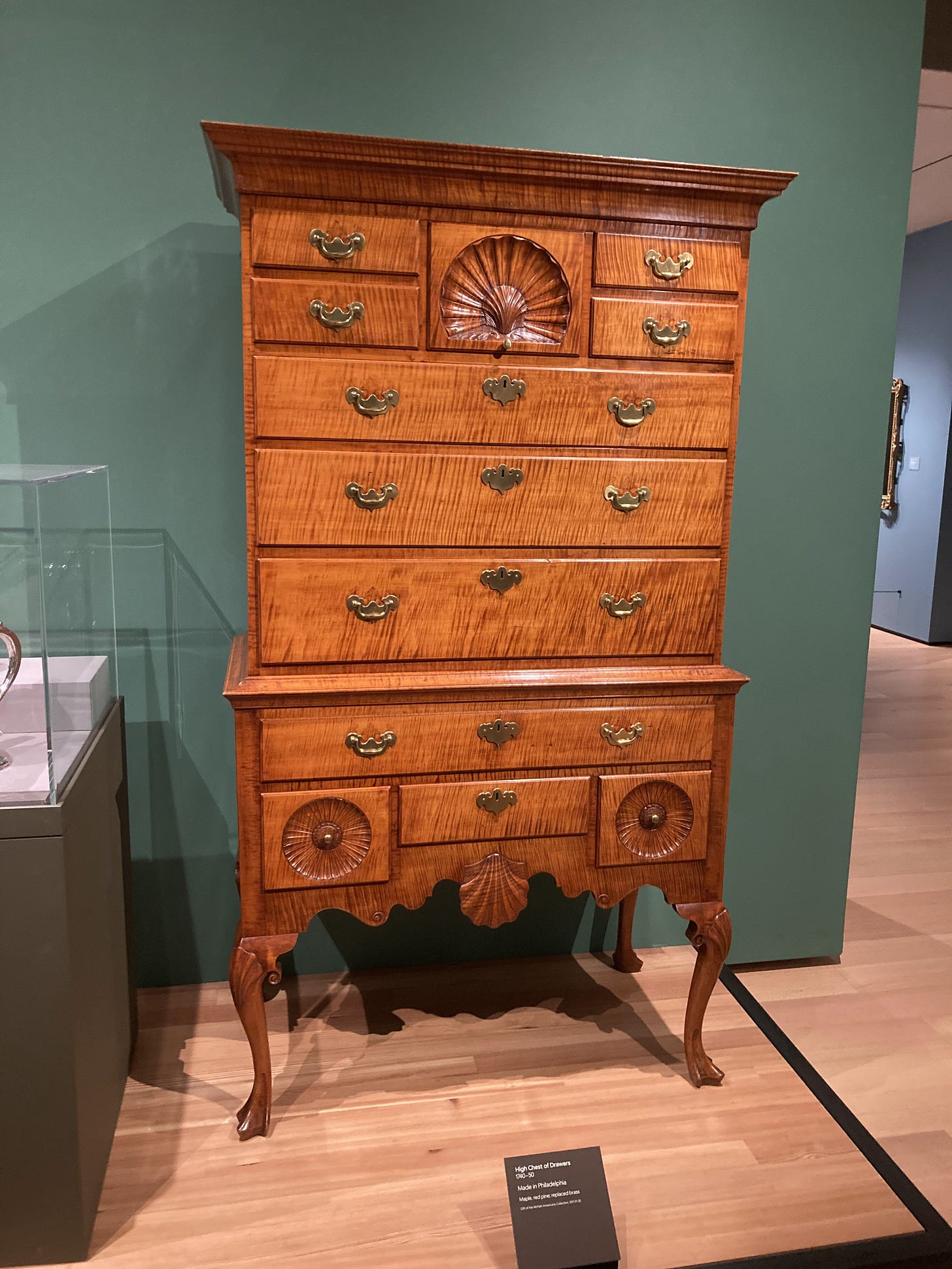
Philadelphia is also proud of a key feature of decorative arts collections displays in several Great American Museums: the period room.

The room and its contents in the photo above is Eleonore Elkins Rice's Drawing Room from her splendid New York apartment, 901 Fifth Avenue, designed by Maison Carlhian of Paris in 1923. Mrs Rice gave her superb collection of French eighteenth-century decorative arts to the Philadelphia Museum of Art in 1939.
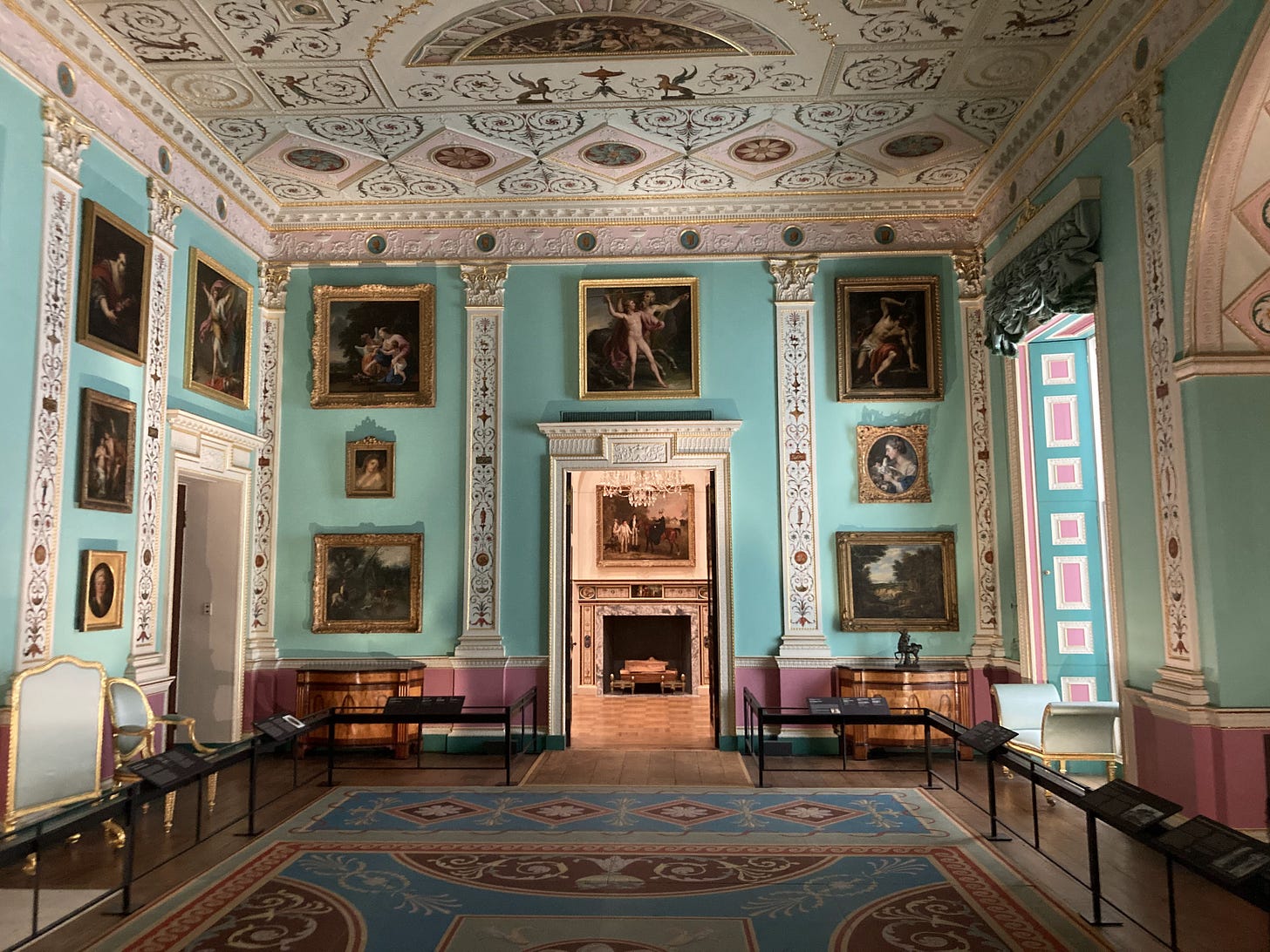
While Mrs Rice’s room was completed in 1923, and reflects the so-called ‘Gilded Age’ of American collecting of European art, another room on display in the Philadelphia Museum of Art is an eighteenth-century room from Lansdowne House in London. The pictures and furniture are not original to the room, having been added by curators to reflect an appropriate room display for the room as it might have been in the late eighteenth century in London.
There are numerous other historic rooms, some grand like those in the photographs above, others quite simple. Some are architecturally intact, such as Mrs Rice’s 1923 interior, others are pastiche, incorporating elements from different buildings to give a sense of what the original might have looked like. This rather theatrical approach no doubt informed the displays of the wonderful group of Brancusi sculptures, beautifully shown in an apse in a chapel-like interior (photo above).
Theatricality abounds in Philadelphia’s displays, and the truly extraordinary group of paintings by Cezanne are displayed to great effect in a large octagon space with a strange group of hotel lobby-like chairs in the centre of the room, which seemed to me rather out of place, as though someone had left them there with good intentions. Perhaps a large octagonal low-backed sofa or series of benches would be more useful? Nevertheless, Cezanne’s monumental Large Bathers is placed dramatically as if on stage, with two large bronze nudes by Aristide Maillol (here and here) standing sentinel at either side (just visible beyond the grey walls).
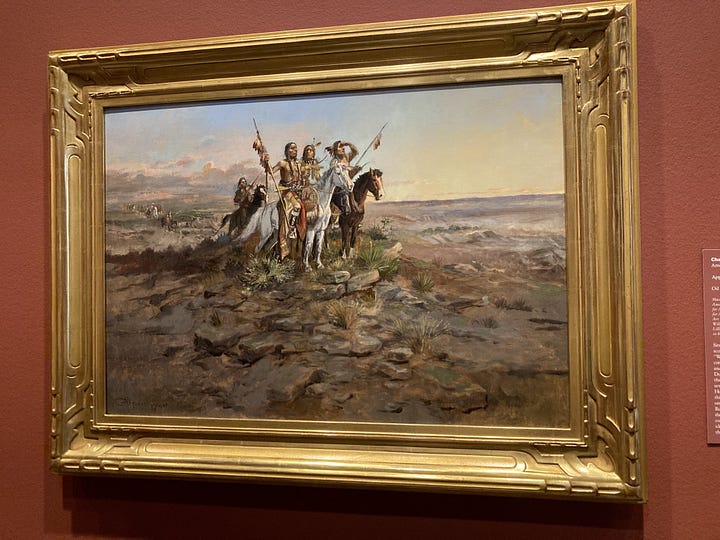
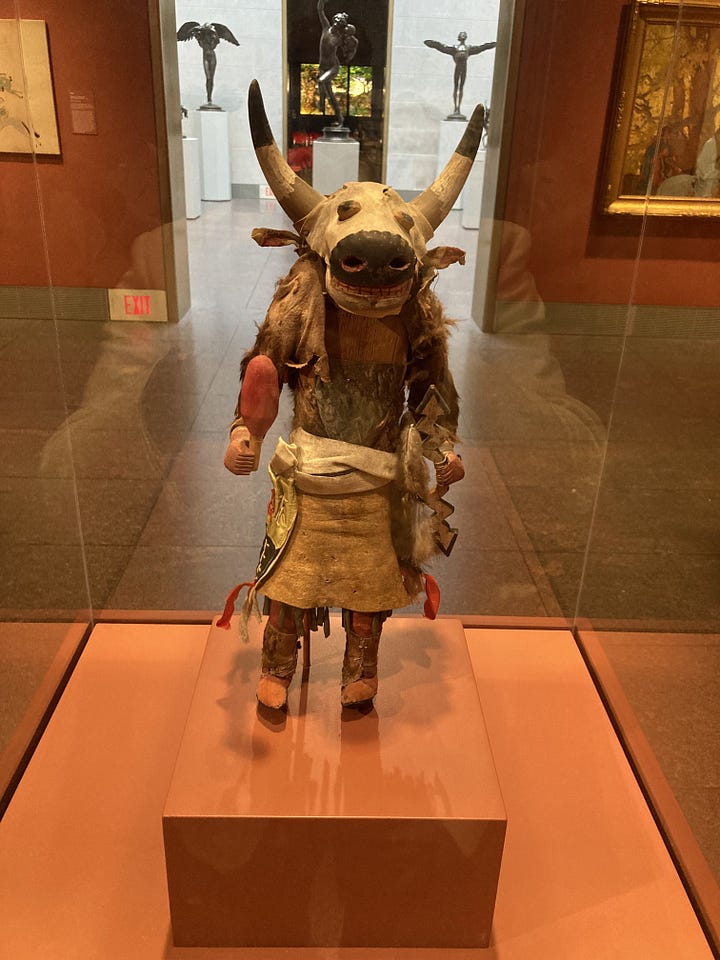
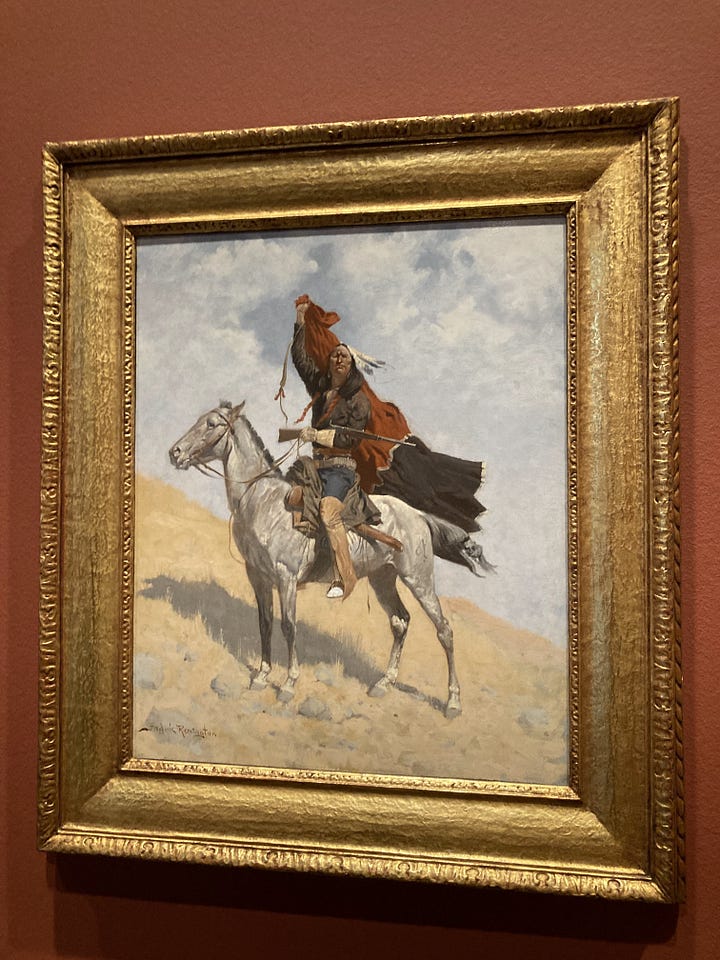

Last stop was Houston. What a great city. I had the good fortune and again the privilege of being shown the new American galleries at the Museum of Fine Arts, by Dr Kaylin Weber, Jeanie Kilroy Wilson Curator of American Painting and Sculpture and Misty Flores, Curator of Decorative Arts. Kaylin had worked at the Royal Collection Trust in the early 2000s, before I was there, so we had a connection. This was another revelation for me: not only the marvellous juxtaposition of myth-making of the American wild west, as depicted by Frederic Remington (eg above, lower left The Blanket Signal), or the superb portraiture by Ammi Phillips of an unidentified woman (above, lower right). The themes of settlement, heroism, adventure, conflict (especially in respect of settlers and indigenous peoples), culture and image-making, references to European cultural standards in America - and many more, all were brilliantly shown in these fascinating galleries. While paintings predominated, I was glad to see decorative art included as well. A large, monumental piece of furniture held much power: an upholstered settee in the European 19th-century Gothic style, from a plantation grimly named ‘Hard Times’, Vicksburg, Mississippi. The label for the settee referred to the social and economic aspirations of the plantation owner in the choice of design: a style rooted in European religious, political and even moral foundations.

There is much else besides of course, wonderful paintings by Albert Bierstadt, the great Civil War painting by Constant Mayer Recognition: North and South, glass by Louis Comfort Tiffany and a marvellous bravura early portrait (1880-81) of the wonderfully-named Madame Ramon Subercaseaux, by John Singer Sargent (below) from the Fayez S Sarofim collection.
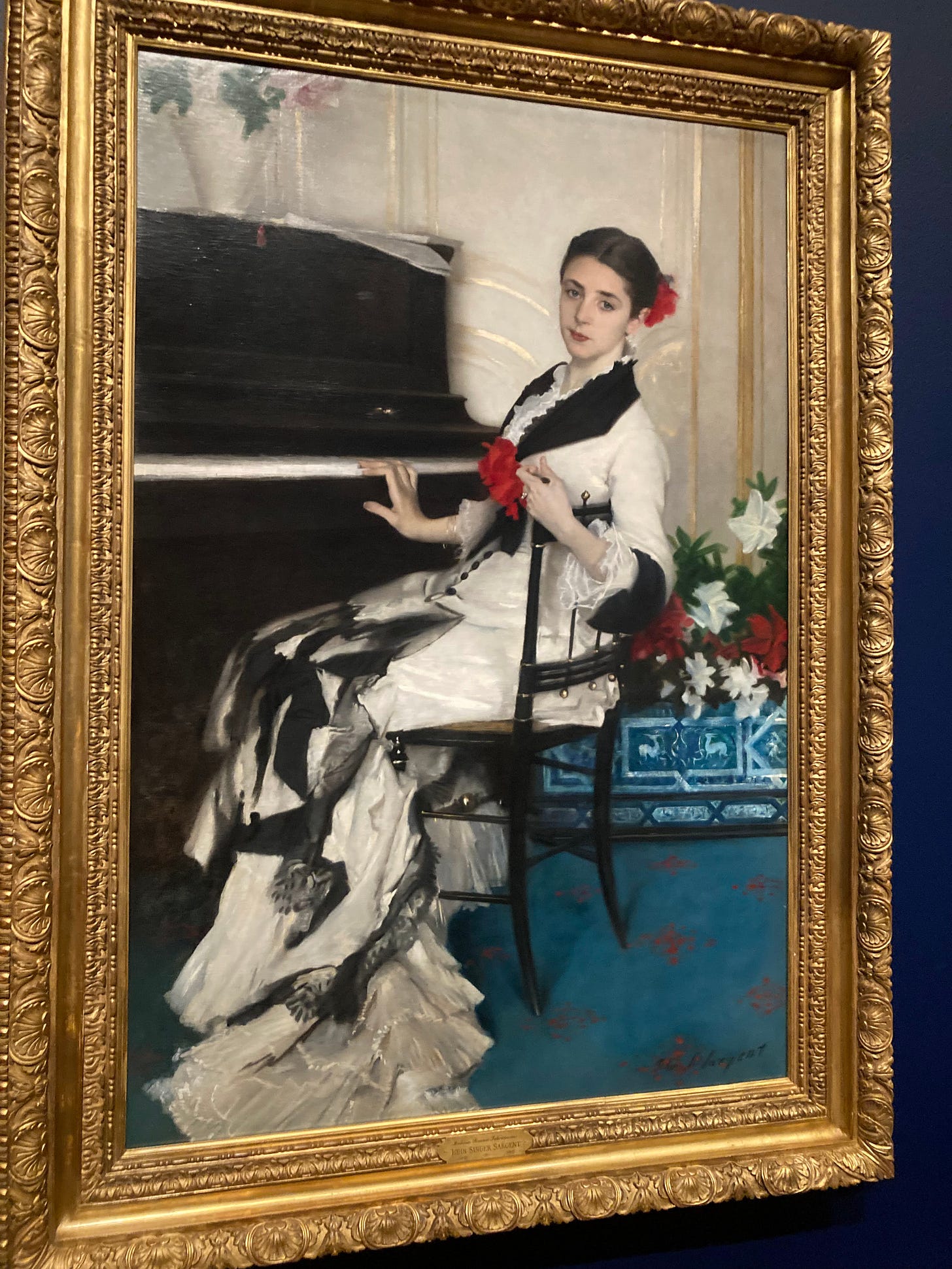
Finally, and perhaps the highlight of my visit to Houston, was satisfaction of my long-held desire to visit Rienzi, the splendidly-named house designed by John F Staub, built by Carroll Sterling and Harris Masterson. Masterson was an Anglophile who had worked in US intelligence in London during the Second World War and while there developed a passion for English decorative arts. After a career in the Texas oil business, and marrying Carroll Sterling, heiress to the Humble Oil fortune, he was able to satisfy his passion for buying the best in European - in particular English - decorative arts.

That tradition is continued by the curators in charge, buying from dealers in London including Mallett such as this George III giltwood armchair or privately through an agent eg one (of two) giltwood sofa by Thomas Chippendale made for Sir Lawrence Dundas.

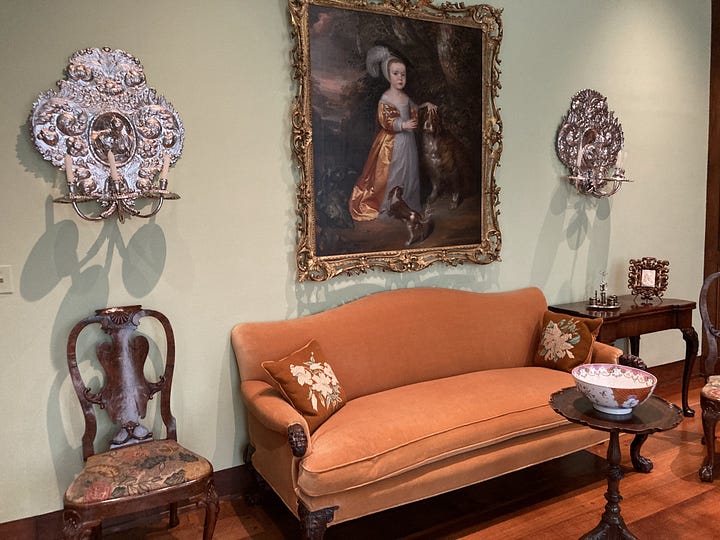

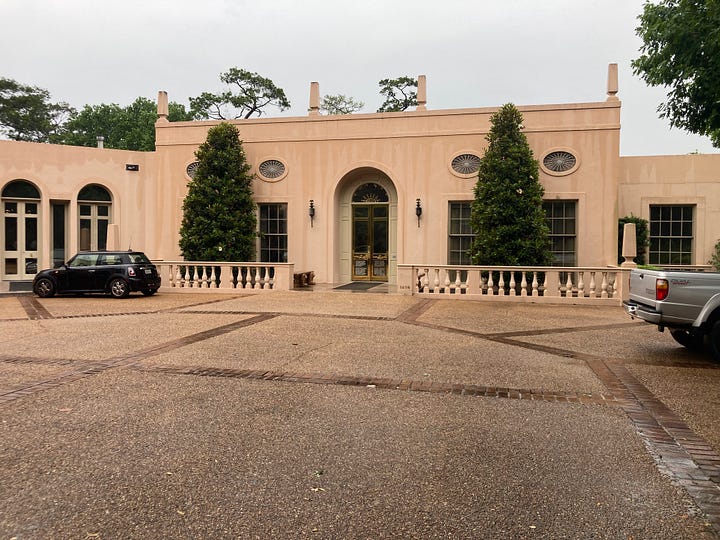
Rienzi is not only a wonderful collection, but epitomises the Houstonian approach to art collecting and how the private intersects with the public: the Museum itself reflects the very personal collections or groups of objects, either acquired by or donated to the Museum. Adding the collection at Rienzi takes this concept a step further, in its bespoke, private setting.
The numerous collections, bequests and purchases made with endowment funds which make up the Museum of Fine Arts Houston jostle with the over-arching narrative which curators must grapple with to make the collections interesting and intelligible for visitors. This may be easier within the setting of a ‘house museum’ like Rienzi, where a personal history dictates object selection and display. In the more laboratory-like setting of the museum, the job of explanation is somehow harder - especially when objects are shown behind thick protective glass. The broad sweep of art history as I learned it (the Gombrich approach?) which also informed many collections which make up these great American museum collections, is gradually being replaced with multifarious narratives, crucially involving objects - also termed ‘material culture’. Judging by the new galleries on display in two major American museums, the narratives curators wish to draw out today must include all works of art, not just paintings or drawings. The Art Museum -especially in the USA - is now more than just a place to view ‘great art’: the civic and local connection is surfaced through redisplayed galleries incorporating all works of human endeavour which reflect societies. How works are shown and received in the museum keeps alive new possibilities in display and interpretation.




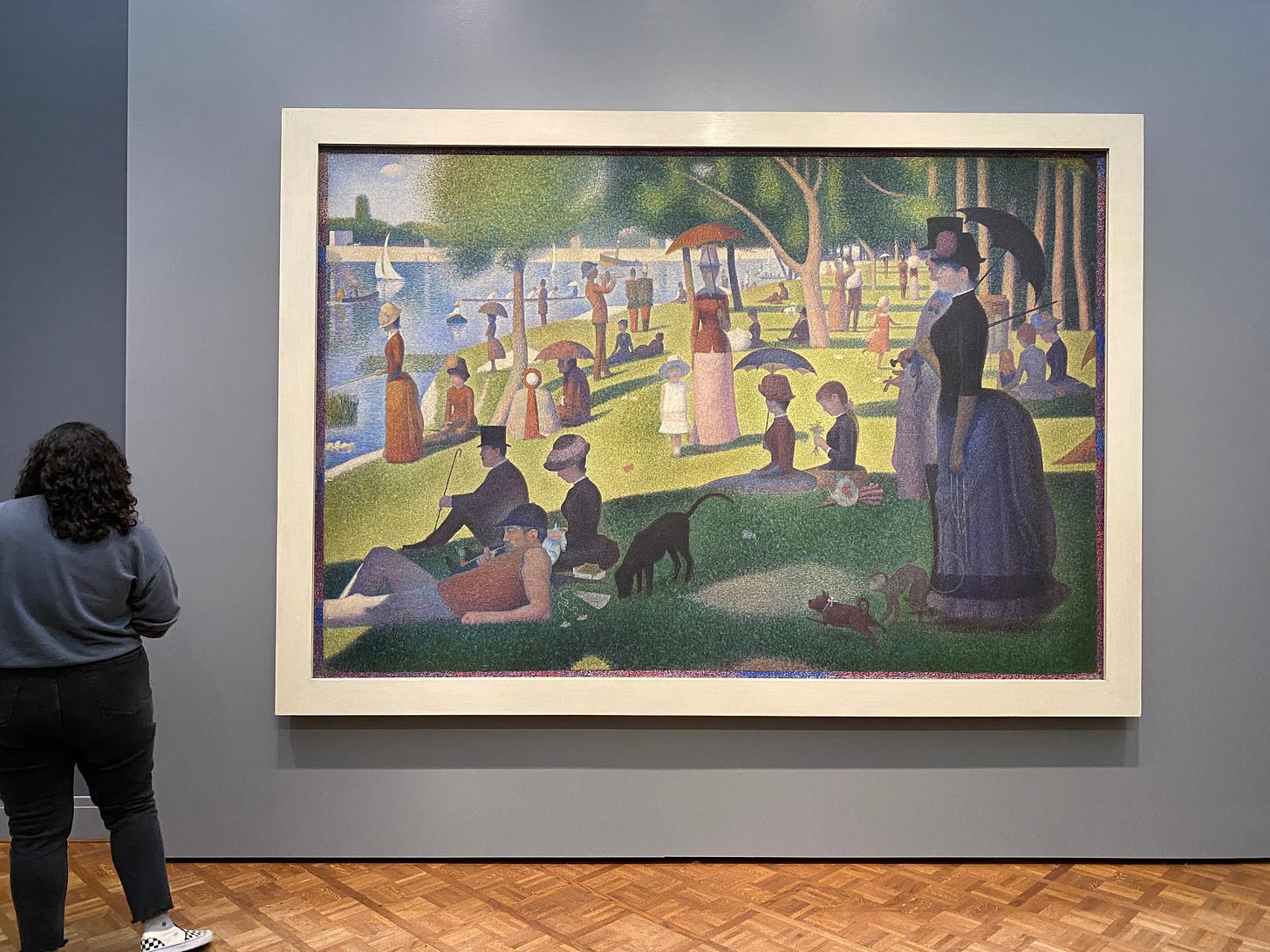
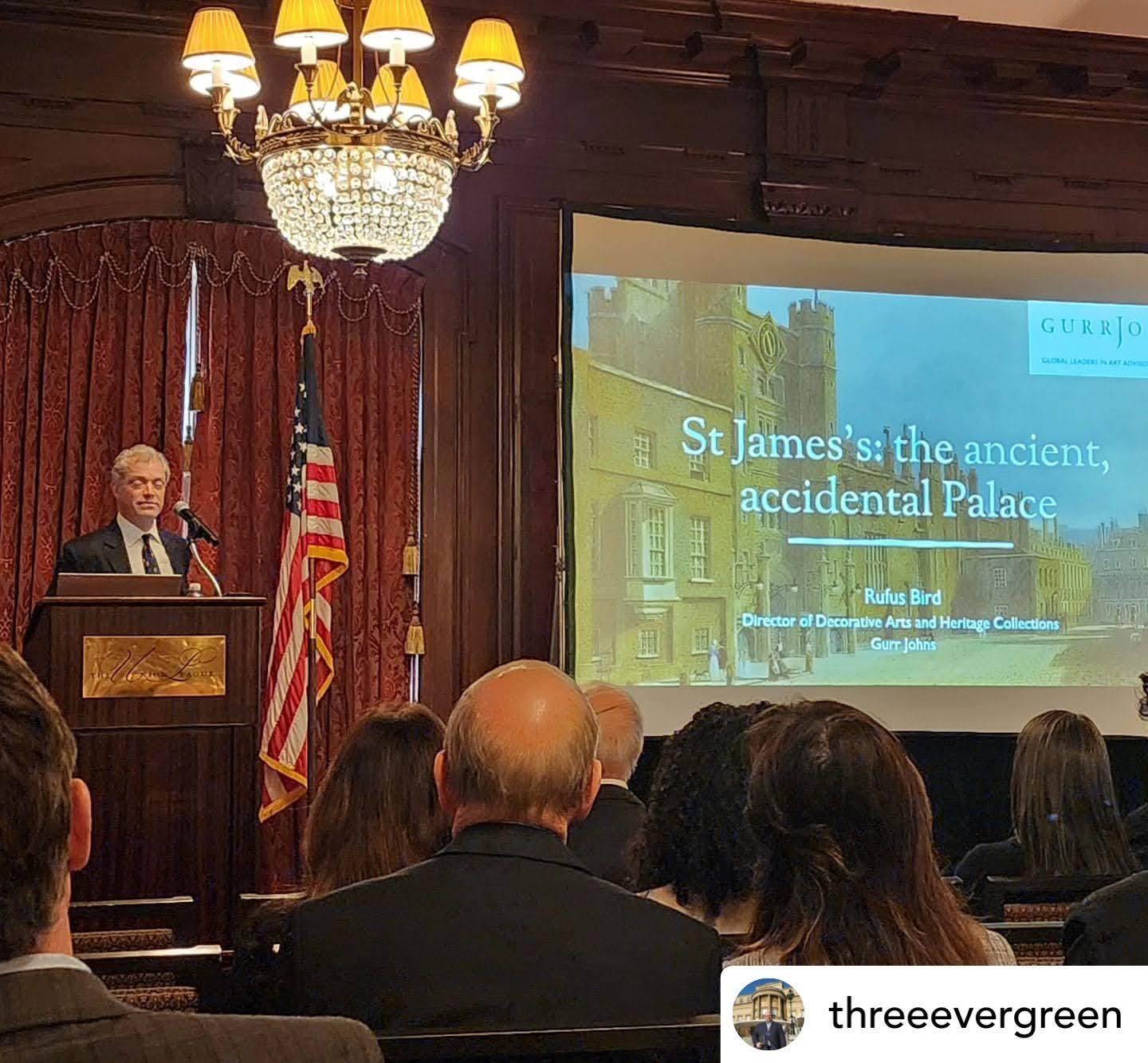

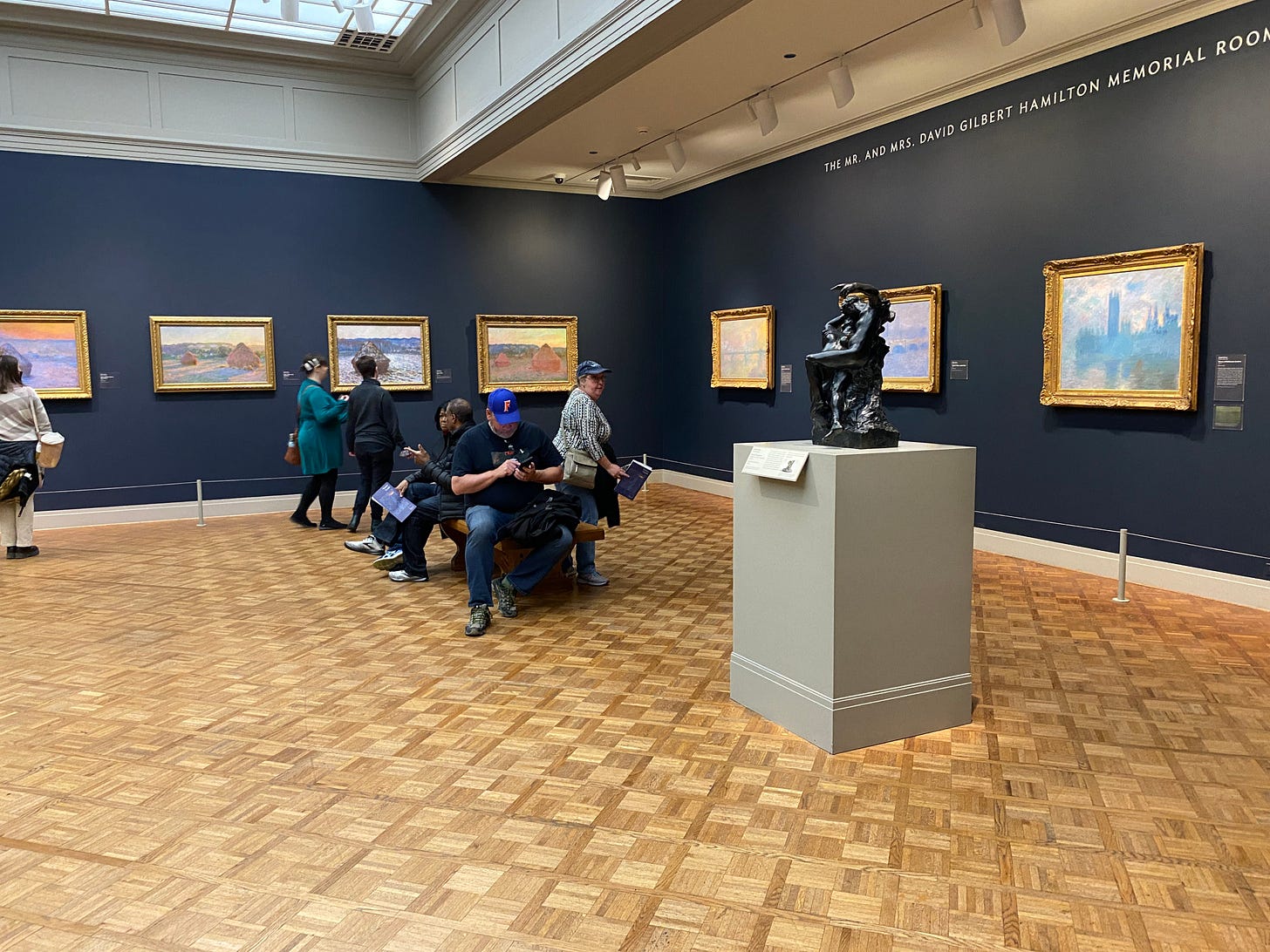

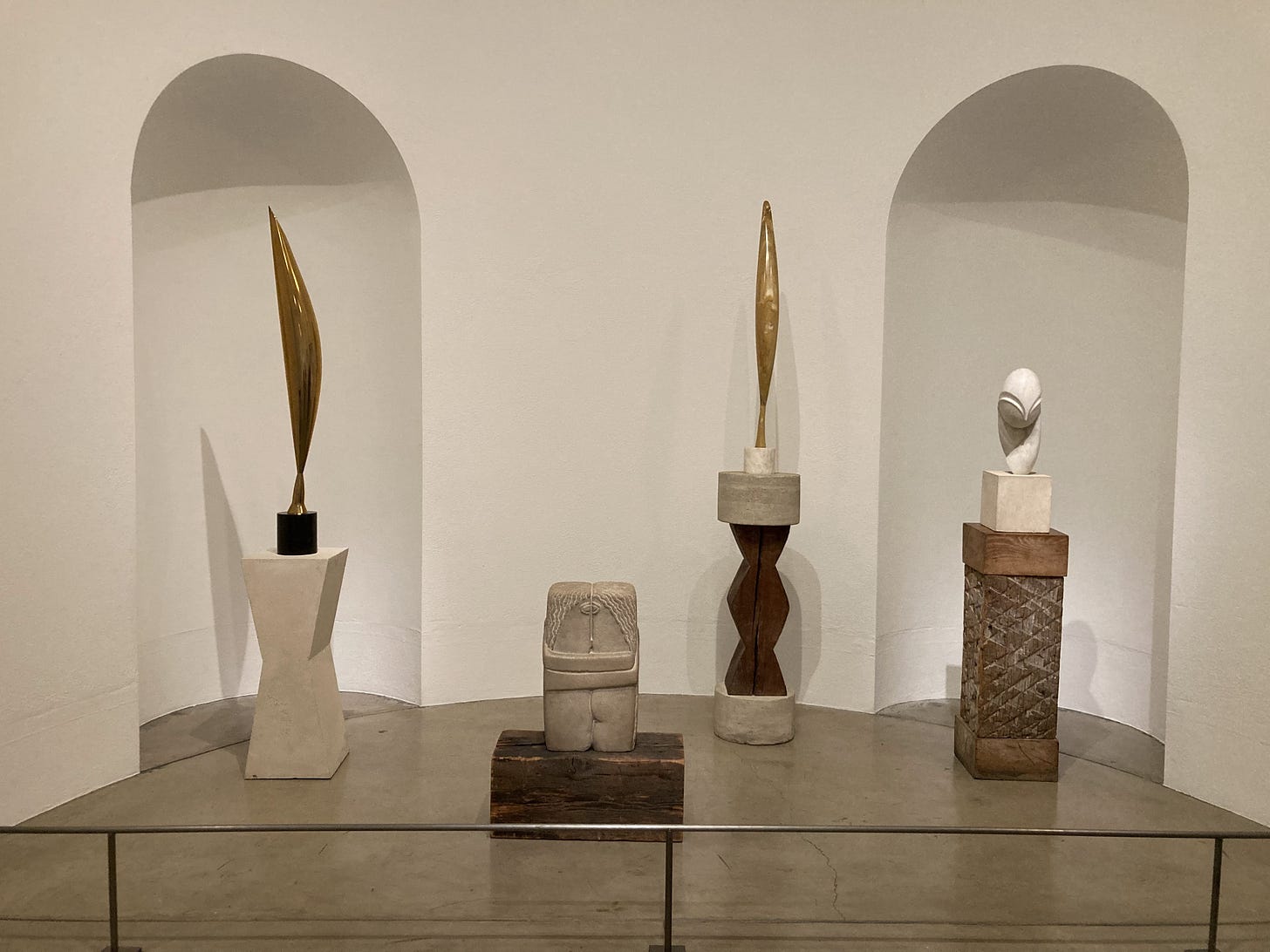

I love period rooms and I regret that they've gone out of fashion. With the elite classes of Europe being blamed for all the world's ills at this cultural moment, I fear for the future of smaller collections of European decorative arts in North America. De-commissioning of inventory is an opportunity for collectors, but a loss for the museum-going public, or at least that part of it that wants to see pre-1800 European furniture and objects. The closest period rooms to me are at the Royal Ontario Museum in Toronto. I've taken a membership in the hope of having a voice to safeguard them.
Yes, museums today are trying hard to devise ways to present these beautiful objects in a new and inspiring manner, but feel obliged to acknowledge the baggage of history. That narrative often gets in the way of understanding beauty and quality.